


CHOQUEQUIRAO
(CUNA DE ORO)
del aymara chuqi, oro, y del quechua k'iraw, cuna
Choquequirao (del aymara chuqi, oro, y del quechua k'iraw, cuna, es decir: "cuna de oro"), son las ruinas de una ciudad inca situada entre las estribaciones del nevado Salcantay, al sur del Perú. Los restos arqueológicos de Choquequirao están conformados por edificios y terrazas distribuidas en diferentes niveles, desde el nivel más bajo Sunch'u Pata hasta la cima truncada más alta, la cual fue nivelada y cercada con piedras para formar una plataforma con una área aproximada de 150 metros cuadrados.
Emplazamiento
(CUNA DE ORO)
del aymara chuqi, oro, y del quechua k'iraw, cuna
Choquequirao (del aymara chuqi, oro, y del quechua k'iraw, cuna, es decir: "cuna de oro"), son las ruinas de una ciudad inca situada entre las estribaciones del nevado Salcantay, al sur del Perú. Los restos arqueológicos de Choquequirao están conformados por edificios y terrazas distribuidas en diferentes niveles, desde el nivel más bajo Sunch'u Pata hasta la cima truncada más alta, la cual fue nivelada y cercada con piedras para formar una plataforma con una área aproximada de 150 metros cuadrados.
Emplazamiento
Choquequirao se encuentra a 13° 32' latitud sur y 72° 44' longitud oeste. Se ubica a 3033 metros sobre el nivel del mar en las estribaciones del nevado Salcantay, al norte del valle del río Apurímac, en la provincia de La Convención en el departamento del Cusco.
El entorno de Choquequirao es uno de los más ricos en biodiversidad. Todas estas especies se han acondicionado a pesar de las variaciones de temperatura como es sol durante todo el día e inclementes heladas durante la noche. La fauna del lugar esta compuesta principalemente por cóndores, tarucas, vizcachas, zorros, zorrinos, pumas, picaflores, osos y el gallito de las rocas, ave nacional del Perú. En su flora destacan los helechos gigantes, el ichu y una gran variedad de orquídeas, donde resalta la de la variedad wakanki.
Formas de acceso
Actualmente la vía terrestre es la única forma posible de alcanzar la ciudadela de Choquequirao. La ruta más conocida es tomando la carretera rumbo a Abancay y en el km 154 elegir el desvío que lleva al pueblo de Cachora, desde allí se debe realizar una caminata cuesta arriba de unos 30 km, cuyo recorrido alcanza los dos días de duración. También es posible acceder por otros poblados aledaños, sin embargo, la ruta puede ser más accidentada.
Historia
Época Inca (1438-1534)
Algunos arqueólogos señalan que la ciudadela fue probablemente construida durante la administración del Inca Pachacutec a la par con Machu Picchu en el siglo XV; sin embargo, otros afirman que su edificación fue posterior a Pachacútec, siendo durante el gobierno de Túpac Yupanqui o incluso de Huayna Cápac que se construyó este complejo. Fue un centro tanto cultural como religioso para la región. Presumiblemente esta ciudadela fue usada como un garita de control para asegurar el acceso a las áreas de Vilcabamba, que conectaba la selva con otros centros importantes como Písac y Machu Picchu. También se estima que la ciudadela jugó un importante papel sirviendo como nexo entre la selva amazónica y la ciudad imperial del Cusco.
Época de transición (1534-1572)
Choquequirao es considerada uno de los últimos bastiones de resistencia y refugio de los Incas, quienes por ordenes de Manco Inca, abandonaron la ciudad del Cusco para resguardarse en las ciudades de la región Vilcabamba, cuando alrededor del año 1535 el Cusco se encontraba sitiado por los españoles. Fue en este lugar (y en general en todo el valle del Vilcabamba) donde Manco y los demás Incas de Vilcabamba resistieron el embate de los españoles, hasta la captura y ejecución de Túpac Amaru I en 1572.
Referencias en la época colonial
El primer explorador que da noticias una ciudadela llamada "Chuquiquirau" fue el explorador español Juan Arias Díaz Topete en el año de 1710. La primera referencia escrita de Choquequirao data del año de 1768 y su autor fue Cosme Bueno, sin embargo la documentación fue puesta de lado y hechada al olvido por las autoridades y el público en general. En 1790, Pablo José Origaín menciona en su "Compendio de Noticias Geográficas del Cuzco" una ciudad despoblada desde la antigüedad con el nombre de Choqequirau.[6]
Redescubrimiento y restauración
En 1834, José María Tejada (prefecto del Cusco) viaja a la ciudadela atraído por las leyendes sobre tesoros en Vilcabamba; así mismo en 1837, Leonce Angrand cartografió el lugar por primera vez, pero sus mapas fueron también puestos al olvido. No fue hasta 1909, año en que el arqueólogo Hiram Bingham y el topógrafo Clarence Hay (ambos norteamericanos) visitaron Choquequirao y elaboraron una descripción minuciosa del sitio, que la ciudadela adquirió mayor atención por parte de los arqueólogos, el gobierno y los turistas.[7] Las primeras excavaciones comenzaron varias décadas después de la visita de Bingham, alrededor de 1970; así mismo en 1986 se hacen estudios intensivos y un plan de restauración del sitio. Actualmente, se calcula que sólo un 30% del complejo, que comprende unas 1810 hectáreas, ha sido desenterrado y puesto en funcionamiento como zona turística; se prevée la finalización de la restauración para el 2011, tardando aún más el estudio y comprensión de su legado histórico.
Descripción de Choquequirao
El complejo de Choquequirao se compone de nueve sectores, entre los que destacan el centro político religioso, el sistema de fuentes y canales con acueductos, y el grupo de las portadas.
Topografía
Las terrazas de ChoquequiraoDesde una vista aérea o a cierta distancia, es fácil distinguir las típicas terrazas incas que conforman las más grandes construcciones de Choquequirao. Un Templo, Algunas edificaciones administrativas y habitaciones para los administradores y acesores principales, que estaban situadas alrededor de la plaza central.
Hacia las afueras del centro de la ciudadela descasan las habitaciones usadas por el resto de la población, que están agrupadas conformado una pequeña aldea. En Choquequiero existen numerosos canales de agua, y acueductos para el suministro de agua potable. A pesar del tiempo y las inclemencias climáticas, la mayoría de las edificaciones de la "hermana sagrada" de Machu Picchu se encuentran bien preservadas, y su restauración durará, según algunos entedidos que están a su cargo, aún varios años más.
Posición Estratégica
Desde la perspectiva andina su ubicación es indudablemente estratégica, lo que le permitió a este singular asentamiento abarcar y tener un dominio sobre lo que podría considerarse uno de los trayectos altitudinales más extraordinarios del país.
A su vez, desde el aire los investigadores, que lo han apreciado, dicen que Choquequirao se muestra como un gran libro abierto, con el caudaloso río Apurimac a sus pies y una gran cadena montañosa que se precipita hacia las vertientes orientales cubiertas por una inmensa vegetación tropical; siendo otra muestra de la pretensión andina de dominar el mundo desde las alturas.
Aspectos constructivos
Arquitectura
Aun cuando solo el 30 por ciento, de 1,810 hectareas del complejo, han sido rescatadas, es posible suponer que Choquequirao era más que una fortaleza, un sitio religioso. Por su locación es probable que haya sido el centro religioso más importante y que estaba ocupado por los sacerdotes y aquellos consagrados a las divinidades. Se ha encontrado pinturas y cementerios que confirmarían esta teoría. Choquequirao está ordenado en nueve zonas construidas como pequeñas aldeas alrededor de una gran plaza donde se encuentran todas las calzadas provenientes de cada zona. Se ha logrado ubicar la plaza superior (Hanan), los depósitos (Qolqa), la plaza principal (Huaqaypata), la plaza inferior (Hurin), el sistema de andenes de cultivo inmediatos a la plaza principal (Chaqra Anden), la plataforma ceremonial (Ushno) y la vivienda de los sacerdotes en la parte baja de la colina..Por esto se presume que Choquequirao fue un gran centro político y económico, que sirvió como enclave comercial y cultural entre la costa, sierra y selva.
Choquequirao presenta múltiples edificaciones de dos pisos con hornacinas en el interior. Además de algunas puertas y nichos hechos con adobe jamba y canales de regadío. El material que fue usado son piedras canteadas con morteros de barro. Existen 22 grabaciones en estas piedras con figuras conocidas como “Llamas del Sol” dispuestas en 15 andes con dirección al nevado Quory Hauyrachina Choquequirao cuenta con un gran sistema de andenes, una característica de los poblados incas, que ayudaban en el uso agrícola de las laderas de los cerros, y que actualmente, a la vista de los visitantes, parecen pisos alfombrados por la vegetación de la zona. Según el historiador Luis Guillermo Lumbreras, Choquequirao da la impresión de haber sido un centro urbano en crecimiento, parte de un gran proyecto mucho mayor que quedó inconcluso.
El entorno de Choquequirao es uno de los más ricos en biodiversidad. Todas estas especies se han acondicionado a pesar de las variaciones de temperatura como es sol durante todo el día e inclementes heladas durante la noche. La fauna del lugar esta compuesta principalemente por cóndores, tarucas, vizcachas, zorros, zorrinos, pumas, picaflores, osos y el gallito de las rocas, ave nacional del Perú. En su flora destacan los helechos gigantes, el ichu y una gran variedad de orquídeas, donde resalta la de la variedad wakanki.
Formas de acceso
Actualmente la vía terrestre es la única forma posible de alcanzar la ciudadela de Choquequirao. La ruta más conocida es tomando la carretera rumbo a Abancay y en el km 154 elegir el desvío que lleva al pueblo de Cachora, desde allí se debe realizar una caminata cuesta arriba de unos 30 km, cuyo recorrido alcanza los dos días de duración. También es posible acceder por otros poblados aledaños, sin embargo, la ruta puede ser más accidentada.
Historia
Época Inca (1438-1534)
Algunos arqueólogos señalan que la ciudadela fue probablemente construida durante la administración del Inca Pachacutec a la par con Machu Picchu en el siglo XV; sin embargo, otros afirman que su edificación fue posterior a Pachacútec, siendo durante el gobierno de Túpac Yupanqui o incluso de Huayna Cápac que se construyó este complejo. Fue un centro tanto cultural como religioso para la región. Presumiblemente esta ciudadela fue usada como un garita de control para asegurar el acceso a las áreas de Vilcabamba, que conectaba la selva con otros centros importantes como Písac y Machu Picchu. También se estima que la ciudadela jugó un importante papel sirviendo como nexo entre la selva amazónica y la ciudad imperial del Cusco.
Época de transición (1534-1572)
Choquequirao es considerada uno de los últimos bastiones de resistencia y refugio de los Incas, quienes por ordenes de Manco Inca, abandonaron la ciudad del Cusco para resguardarse en las ciudades de la región Vilcabamba, cuando alrededor del año 1535 el Cusco se encontraba sitiado por los españoles. Fue en este lugar (y en general en todo el valle del Vilcabamba) donde Manco y los demás Incas de Vilcabamba resistieron el embate de los españoles, hasta la captura y ejecución de Túpac Amaru I en 1572.
Referencias en la época colonial
El primer explorador que da noticias una ciudadela llamada "Chuquiquirau" fue el explorador español Juan Arias Díaz Topete en el año de 1710. La primera referencia escrita de Choquequirao data del año de 1768 y su autor fue Cosme Bueno, sin embargo la documentación fue puesta de lado y hechada al olvido por las autoridades y el público en general. En 1790, Pablo José Origaín menciona en su "Compendio de Noticias Geográficas del Cuzco" una ciudad despoblada desde la antigüedad con el nombre de Choqequirau.[6]
Redescubrimiento y restauración
En 1834, José María Tejada (prefecto del Cusco) viaja a la ciudadela atraído por las leyendes sobre tesoros en Vilcabamba; así mismo en 1837, Leonce Angrand cartografió el lugar por primera vez, pero sus mapas fueron también puestos al olvido. No fue hasta 1909, año en que el arqueólogo Hiram Bingham y el topógrafo Clarence Hay (ambos norteamericanos) visitaron Choquequirao y elaboraron una descripción minuciosa del sitio, que la ciudadela adquirió mayor atención por parte de los arqueólogos, el gobierno y los turistas.[7] Las primeras excavaciones comenzaron varias décadas después de la visita de Bingham, alrededor de 1970; así mismo en 1986 se hacen estudios intensivos y un plan de restauración del sitio. Actualmente, se calcula que sólo un 30% del complejo, que comprende unas 1810 hectáreas, ha sido desenterrado y puesto en funcionamiento como zona turística; se prevée la finalización de la restauración para el 2011, tardando aún más el estudio y comprensión de su legado histórico.
Descripción de Choquequirao
El complejo de Choquequirao se compone de nueve sectores, entre los que destacan el centro político religioso, el sistema de fuentes y canales con acueductos, y el grupo de las portadas.
Topografía
Las terrazas de ChoquequiraoDesde una vista aérea o a cierta distancia, es fácil distinguir las típicas terrazas incas que conforman las más grandes construcciones de Choquequirao. Un Templo, Algunas edificaciones administrativas y habitaciones para los administradores y acesores principales, que estaban situadas alrededor de la plaza central.
Hacia las afueras del centro de la ciudadela descasan las habitaciones usadas por el resto de la población, que están agrupadas conformado una pequeña aldea. En Choquequiero existen numerosos canales de agua, y acueductos para el suministro de agua potable. A pesar del tiempo y las inclemencias climáticas, la mayoría de las edificaciones de la "hermana sagrada" de Machu Picchu se encuentran bien preservadas, y su restauración durará, según algunos entedidos que están a su cargo, aún varios años más.
Posición Estratégica
Desde la perspectiva andina su ubicación es indudablemente estratégica, lo que le permitió a este singular asentamiento abarcar y tener un dominio sobre lo que podría considerarse uno de los trayectos altitudinales más extraordinarios del país.
A su vez, desde el aire los investigadores, que lo han apreciado, dicen que Choquequirao se muestra como un gran libro abierto, con el caudaloso río Apurimac a sus pies y una gran cadena montañosa que se precipita hacia las vertientes orientales cubiertas por una inmensa vegetación tropical; siendo otra muestra de la pretensión andina de dominar el mundo desde las alturas.
Aspectos constructivos
Arquitectura
Aun cuando solo el 30 por ciento, de 1,810 hectareas del complejo, han sido rescatadas, es posible suponer que Choquequirao era más que una fortaleza, un sitio religioso. Por su locación es probable que haya sido el centro religioso más importante y que estaba ocupado por los sacerdotes y aquellos consagrados a las divinidades. Se ha encontrado pinturas y cementerios que confirmarían esta teoría. Choquequirao está ordenado en nueve zonas construidas como pequeñas aldeas alrededor de una gran plaza donde se encuentran todas las calzadas provenientes de cada zona. Se ha logrado ubicar la plaza superior (Hanan), los depósitos (Qolqa), la plaza principal (Huaqaypata), la plaza inferior (Hurin), el sistema de andenes de cultivo inmediatos a la plaza principal (Chaqra Anden), la plataforma ceremonial (Ushno) y la vivienda de los sacerdotes en la parte baja de la colina..Por esto se presume que Choquequirao fue un gran centro político y económico, que sirvió como enclave comercial y cultural entre la costa, sierra y selva.
Choquequirao presenta múltiples edificaciones de dos pisos con hornacinas en el interior. Además de algunas puertas y nichos hechos con adobe jamba y canales de regadío. El material que fue usado son piedras canteadas con morteros de barro. Existen 22 grabaciones en estas piedras con figuras conocidas como “Llamas del Sol” dispuestas en 15 andes con dirección al nevado Quory Hauyrachina Choquequirao cuenta con un gran sistema de andenes, una característica de los poblados incas, que ayudaban en el uso agrícola de las laderas de los cerros, y que actualmente, a la vista de los visitantes, parecen pisos alfombrados por la vegetación de la zona. Según el historiador Luis Guillermo Lumbreras, Choquequirao da la impresión de haber sido un centro urbano en crecimiento, parte de un gran proyecto mucho mayor que quedó inconcluso.
The Other Machu Picchu
By ETHAN TODRAS-WHITEHILL
DAWN had just broken, and the lost city of the Incas lay empty — not a tourist in sight. From the priests’ district, the high point of the ruins, the bright green central plaza stretched along the narrow summit of a high ridge and dropped precipitously on both sides to a turquoise river thousands of feet below.
In a small chamber two feet from where I stood, the high priest had once meditated daily to seek guidance from his god. In the two-story peaked-roof structures downhill and to the left, workers had dropped off their tools at night — weary men stumbling in after a Sisyphean day of cutting and lugging stones. Beyond lay a panorama of jungle and 17,000-foot peaks. Around me was silence — and isolation.
This was Peru, but not the famous Machu Picchu. I was at Choquequirao, a sister city of similar significance built along similar lines, but harder to reach and, for the time being, still sufficiently free of tourists for a visitor to imagine, without much effort, the priests and builders, the supplicants and courtiers roaming its paths and plaza. Twenty-five years ago, Machu Picchu must have looked much like this.
Choquequirao’s builder, Topa Inca, chose his city’s site and design precisely because of the similarities to Machu Picchu, the city of his predecessor, Pachachuti, according to Gary Ziegler, an independent American archaeologist who worked on the first Choquequirao excavation. The two cities were about the same size and served the same religious, political and agricultural functions. But because archaeologists long underestimated the importance of Choquequirao, the city’s existence was known for almost 300 years before the first restoration was begun in 1993. It is still only 30 percent uncovered. The Peruvian government is just beginning to plan for large-scale tourism there.
In 2006 Choquequirao drew 6,800 visitors, according to Peru’s National Cultural Institute, more than double the total in 2003 but a little more than 1 percent of the number who went to Machu Picchu. For now, Choquequirao remains “an Inca site you can visit without a 60-person Japanese tour group and two tour guides with umbrellas and megaphones,” Mr. Ziegler had told me — a “journey for the savvy traveler.”
I was traveling with five companions: my girlfriend, an Israeli couple who were both Army veterans, a Dutch student and an Arizona bookkeeper turned vagabond. We had coalesced into a group while studying Spanish at a language school in Cuzco.
The first part of our journey to Choquequirao took us to Cachora, the nearest town. It has no direct bus service, so we went from Cuzco by cab — a beat-up station wagon that bumped and twisted over 100 miles of poorly paved road. When we arrived, well after sunset, the indigo sky was dotted with the last twinkles of alpenglow on the snow-covered Salkantay ridge, so impossibly high above us that it was easier to believe they were stars.
We dined at the Terrace of Choquequirao, a menuless two-table restaurant owned by Gilberto Medina, a thin, deferential man who talked to us over coca leaf tea. In the previous year, he told us, the town’s main road had been paved and two new restaurants had joined his. Hotels were under construction, and the first Internet cafe had opened.
In Cuzco before the trip, Pedro Tacca, the director of patrimony for the National Cultural Institute, had spoken to me about the importance of preserving communities like Cachora and the other towns near Choquequirao as tourism to the site grows. He said Peru is trying to control growth and access to Cachora to keep it from becoming another Aguas Calientes, the town closest to Machu Picchu, which is made up entirely of tourist shops, restaurants and hostels, with a railroad track — where the tourists arrive — instead of a main street. “It’s a community without personality,” he said, “horrible in contrast to majestic and beautiful Machu Picchu.”
For now, Cachora still belongs to its residents, farmers whose way of life has changed little in centuries. Invited by Mr. Medina, we went to the elementary school to see a celebration of the Festival of the Virgin Carmen. Children in flannel shirts, wide dresses and colorful mantas (blankets) performed traditional dances, sashaying, spinning and mugging for their doting parents. In the finale, a 25-foot bamboo tower of flammable pinwheels, linked by fuses made with newspaper, set off a shower of colorful sparks. The children tucked their shirts over their heads and ran back and forth under the fiery spray as if it were a playground sprinkler, shrieking with delight.
From Cachora, the trek to Choquequirao is 20 difficult miles in the mountains. Most visitors rent horses, but all of us were in our 20s, and we decided to hike, walking out of town the next morning with mules carrying our packs. The dusty road took us down a quilt of fields and mudstone houses stitched together by lines of outsize aloe plants and shimmery blue eucalyptus trees. Our legs followed the road along the winding cliffs over the Apurímac River, but our eyes stayed fixed on the Salkantay ridge to the north, now appearing in daylight like the snow-capped, protective plates of a massive stegosaurus.
After a knee-crushing 4,000-vertical-foot descent, we spent the second night at a campsite full of pleasant surprises like flush toilets, a shower and cold bottles of Coca-Cola from a woman whose family had trekked them in to sell to tourists. The next morning we embarked on the last and hardest part of the trail: eight miles and 5,000 vertical feet up.
Glad to rest, we stopped after two hours at a three-hut village called Santa Rosa, where in a thatch-roofed store Julian Covarrubias, a baby-faced 25-year-old with a faded Adidas hoodie and a neat goatee, told us he was seeing 15 to 20 tourists a day, and that was plenty for him. Five years ago only one or two a month came through. Sure, he said, he was selling more Cokes now, but his family had been on this land for over 100 years, growing sugar cane, avocados and papayas, had made it through occupation by Shining Path guerrillas in the ’80s, and didn’t want to leave to make way for government tourism projects.
We returned to the arduous trek (which government officials hope eventually to eliminate by building a funicular up the mountain) and at nightfall were setting up camp in the government campground just below the main plaza of Choquequirao. A man approached — 40 or so, with a thin brown ponytail and a button-down shirt left open above a black Tasmanian Devil T-shirt — and directed us to a different spot, saying with calm authority, “I decide who camps where.” He was Enrique Yábar, park chief of Choquequirao.
Mr. Yábar told me that if it were up to him and most of his 24 workers, Choquequirao would remain unknown until more work had been done to limit the effects of tourism. “All of us as inhabitants of the Andes,” he told me, “are directed by our gods, the mountains, and we have the mission to protect them.”
I couldn’t wait until morning to see the ruins, and neither could Avishai, the Israeli man. We hiked up and emerged out onto the open ridge top, a cold wind cutting through our fleece jackets. A wide-winged condor swung on a thermal a few hundred feet away and stopped dead, as if hanging from a mobile. We began climbing stone steps and ducking through ancient doorways like two toddlers on a jungle gym. For a precious few minutes, that ridge top, those 15,000-foot violet hills, those buildings so revered by an extinct civilization, were ours, and our sovereign desire was horseplay.
The next day, after my quiet moment at dawn, we all explored the ruins. Our mule driver knew a little about the site, but for the most part we guided ourselves. I had Spanish-language photocopies of government materials; the one book I had found in English was filled with beautiful photographs and too heavy to tote up the mountain. We saw only six other tourists.
Choquequirao, like all important Incan cities, is laid out in alignment with the movements of the sun and the stars. One building on the central plaza has nooks in which the mummies of important citizens were placed, and it is onto these nooks that the first rays of dawn fall each day.
The city’s central temple is a small rectangle on the other side of the plaza with evenly spaced depressions for altars and stone hooks where the priests hung their raiment. The most striking feature about the temple is how tiny it is; like those at Machu Picchu, it could fit perhaps 20 worshipers and had very little of the architectural grandeur of a mosque, a church or a synagogue. But then, an attempt at human grandeur here, in the shadow of the jagged jungle peak Corihuayrachina and facing arid, domelike mountains so gargantuan they make clouds look small, would seem redundant at best.
Although Choquequirao is more spread out than Machu Picchu, and therefore less photogenic, the promontory on which it lies reaches its zenith with a ceremonial hill behind the plaza, a smaller version of the rugged mountain seen in every photograph of Machu Picchu. The hike up takes just a few minutes but affords a 360-degree view of the ruins and the surrounding landscape. The curious feature of the hill is that it was scalped, flattened and denuded of vegetation by the Incas so their priests could perform rituals there.
On the other side of the plaza, the city climbs steadily uphill following a carved stone aqueduct where water will again flow in a few years as restoration progresses. It soon reaches a zigzag set of terraces resembling a giant’s staircase. Obsessed as they were with building cities on top of mountains, the Incas developed terraces like these to grow crops. Choquequirao has quite a few scattered about, long rice-paddy-like structures imposing angular order on the wild cliffs, but these narrower terraces were special. The priests probably used them to grew the special coca that figured heavily in their rituals. (Modern Andean peoples still use the coca leaf, not to make cocaine but for the mildly euphoric coca tea that appears to occupy the same space in their culture as our coffee, alcohol and aspirin wrapped into one.)
A path from the central plaza leads to the residential district, a complex of newly exposed simple four-walled houses that the jungle is already doing its best to reclaim. The place had a creepy “Indiana Jones and the Temple of Doom” vibe, heightened by the rustling of unknown animals in the brush. That glancing-over-your-shoulder fear, the sort of adrenaline rush you hope for at ancient ruins, is still attainable at Choquequirao.
My favorite structures were the peaked-roof houses between the central plaza and the priest’s section above. Missing only the straw thatch above to be livable (and perhaps a couch or two), they were the largest buildings in the site. Inside one, I lay on my back on the neatly trimmed grass floor and reveled in the interlocking Incan stonework — and the silence. All that day, my group saw only six other visitors at Choquequirao. I could have lain smack in the center of the central plaza, which at Machu Picchu is strictly off limits, and no one would have bothered me.
Choquequirao truly is the lost city of the Incas. In the days of the Spanish conquest, Choquequirao became the principal religious center for the last-gasp Inca state, but its name does not appear in any of the chronicles of the age. Mr. Ziegler theorizes that the Incas did not want the Spanish to know it existed; in fact, they never did find the city. When it was abandoned in the late 16th century, it just shut down, tools left in place for archaeologists like Mr. Ziegler to find hundreds of years later, “like someone just turned out the light and walked away overnight,” he said. The first Westerner to visit was Juan Arias Díaz, a Spanish explorer who arrived in 1710.
Later in the day, I saw a man in a denim shirt and a broad-brimmed hat studying some papers against the low stone wall. I asked him if he was an archaeologist. He shook his head and said something in Spanish that I didn’t catch, and then tried again, saying in heavily accented English, “You know: ladies and gentleman!”
His name was John Chavez, and he was an entertainer hired by the Peruvian government to greet tourists and show them the central plaza. But he was still learning the ropes. Every time I asked a question, he looked down at his notes, which were highlighted and annotated like a high school history textbook, and then gave me an answer that was muddled, incomplete or occasionally wrong.
I found his incompetence oddly thrilling. For all the stories I’ve heard from older travelers about how the great sites of the world felt before they became household names — Angkor Wat, Prague, Machu Picchu — I finally had one of my own: “I was at Choquequirao when even the tour guides didn’t know what they were doing.”
VISITOR INFORMATION
Flights to Cuzco generally involve a change in Lima. Early July flights on LAN Peru from Kennedy Airport in New York were recently available at about $1,110.
Several travel agencies in Cuzco organize tours to Choquequirao with pre-arranged accommodation, transportation, guides and mules or horses, typically for about $300 to $400. SAS Travel on the Plaza de Armas has a good reputation (51-84-255-205; http://www.sastravelperu.com/).
To tour on your own, hire a taxi to Cachora from Cuzco ($40 to $50 one way), leaving early in the day (or the driver won’t want to take you). You can pre-arrange a return with your driver, but it’s not necessary.
In Cachora, stay at the Casa de Salcantay, a small new hostel in a Dutch climber’s highly aesthetic home, complete with tulips ($22 a person per night, including breakfast. http://www.salcantay.com/). Jan Willem van Delft, the proprietor, speaks perfect English and will help you arrange mules and horses ($7 to $10 a day each) and a mule-driver.
Along the trail there are campsites every few hours, some government-run, others belonging to villagers, with very small or no fees. If you don’t like one site, you have to hike a few hours to the next. If you arrange your trip in Cachora, your mule driver will be an adequate guide.
Copyright 2007 The New York Times Company
June 3, 2007
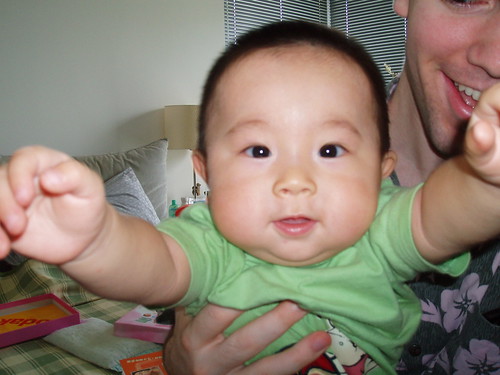



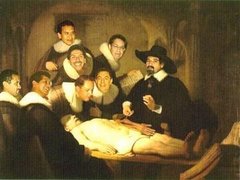

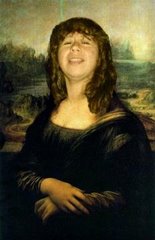
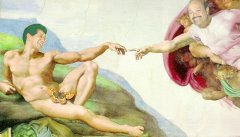

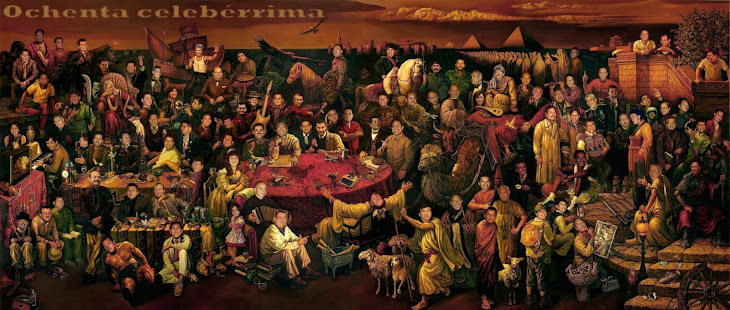
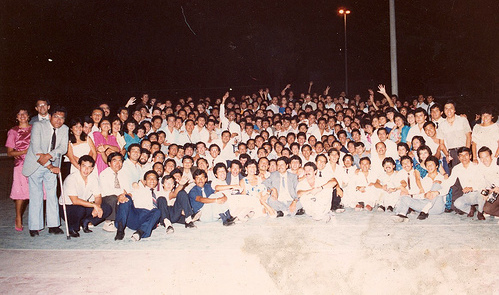
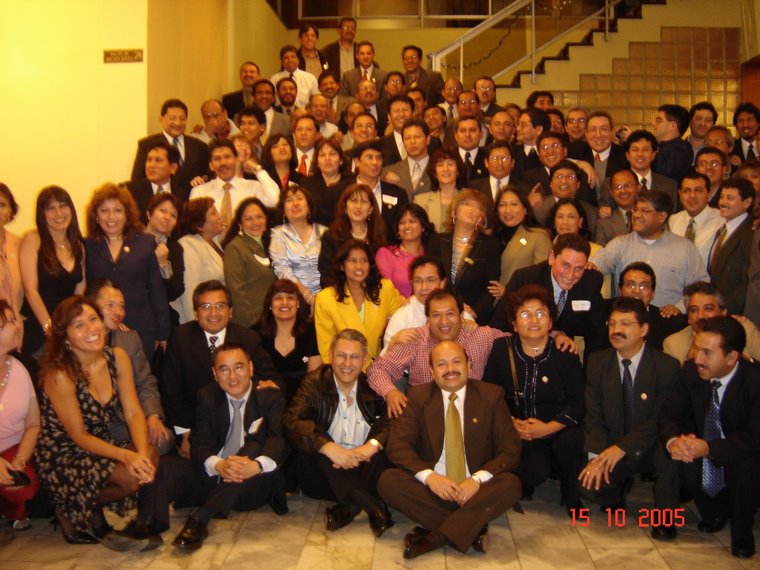

No hay comentarios.:
Publicar un comentario